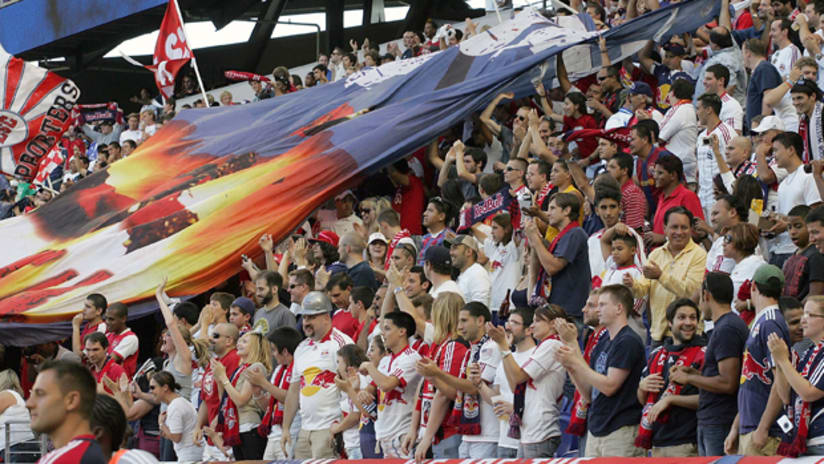We all know that soccer fans are a different breed than your typical, run-of-the-mill North American sports fan.
Part of that is just because of the nature of the game — 90 minutes of constant action with no breaks can lead to a, shall we say, “focus” that is often lacking at other stateside sporting events.
But another part of that is because, until very recently, there was no bigger outsider in sports than the North American soccer fan.
Often derided in mainstream media and sadly without a top-flight league for more than a decade, the US and Canadian soccer fan tended to be someone who wasn’t afraid to throw good money after bad, tilt at windmills or commit body-and-soul to a lost cause.
Except it turns out that those fans, those original supporters from 1995 (yes, there were supporters groups before there were even officially announced MLS teams), were the tip of an iceberg, and the vanguard of – if we may plagiarize a previous MLS ad campaign – a new soccer nation.
The roots of supporters groups across the land are as varied as the people in them, a multicultural swathe of the continent that’s often as much at home singing in Spanish or Polish as it is in English. (And, with the arrival of Montreal in 2012, French!)
New York’s Empire Supporters Club is the oldest group in the league, having been formed in the mid-1990s to bring some atmosphere to the games of the lost-and-lamented New York Centaurs of what was then the A-League.
[inlinenode:330172]From ESC's website:
“The Centaurs played at Downing Stadium, the home of the old NY Cosmos. The games were woefully underattended but the Centaurs developed a fairly die-hard following which began calling itself the 'NYC Firm.' It was at these games that we became friends with Kevin McCallister, the guy who deserves all the credit for the founding of the ESC. Kevin was an attorney, and it was his tremendous organizational skills and powers of negotiation that made the ESC possible.”
As stated, the Centaurs drew poorly – typically less than 500 people showed up at 15,000-capacity Downing Stadium – and the team folded after the 1995 season. But the experience engendered a unity among the early ESC that the group was able to use to push the MetroStars front office to set aside a permanent, standing-only supporters section of Giants Stadium.
By game two of the MetroStars’ existence, section 101 was the ESC section. Fourteen years later, when Red Bull Arena opened, the RBNY front office had followed tradition and again set aside 101 for the ESC.
Further south, D.C. United’s Screaming Eagles had an easier route. Putting to good use what was then the relatively new technology of the internet, Matt Mathai was able to get a grassroots fan club going and secure the backing of their local team all at once.
In what was a coup for United and the league, the DC front office decided to put the hardcore supporters – which at that time also included La Barra Brava, founded in 1995 by Oscar Zambrana and still going strong – along the camera-side touchline at RFK Stadium. The bouncing stands and DC’s liberal approach to tifo, streamers and the like made for an atmosphere and TV spectacle that was unmatched in the early days of the league.
[inlinenode:329977]By 2007, though, the early days were gone and supporters culture underwent a seismic shift with the addition of Toronto FC. BMO Field was the perfect size for MLS, and The Red Patch Boys – TFC’s largest and oldest group – worked with the front office to make sure it would be a home environment unlike any other.
They were successful.
Sam Pierron, once a member of the early Kansas City supporters group called the Mystics, summed it up: “Toronto changed everything. I think everyone knows that."
What specifically changed with Toronto was the perception of what it would take to fill a soccer specific stadium. TFC were able to market directly to the supporters groups – there are nearly 3,000 members of the Red Patch Boys alone – and fill vast swathes of BMO with loud, raucous, boisterous supporters who sing for the entire game.
With the further additions of Seattle in 2009 and Philadelphia in 2010, as well as the consolidation of supporters' sections in places like Columbus, Salt Lake, San Jose and Colorado, the tide of supporters culture began to rise.
“I think,” Pierron said, “that there are very few places in the league where there’s not that sort of passion that you want to see. I mean, I remember Kansas City back in the old days, and then you look at the Cauldron now, and it’s night-and-day.”
The entrance of Portland and Vancouver into MLS – both the Timbers Army and the Southsiders are more than a decade old – should keep the tide rising for 2011. MLS teams in both the US and Canada have created a unique supporters ethos, one that draws from the local culture as much as it does from traditional European and Latin American-style support.
For those who were there from the start, it’s been an incredible journey.
Think you know the game? Test your powers of prediction with MLSsoccer.com's fantasy game,Pro Soccer Picks. Play NOW!


